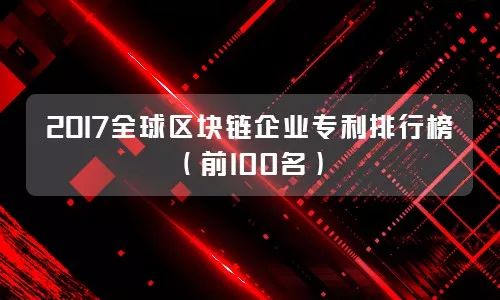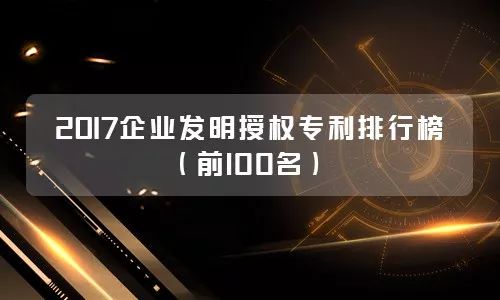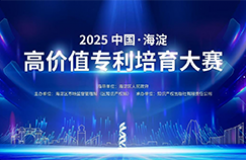没收到验证邮件?请确认邮箱是否正确或 重新发送邮件
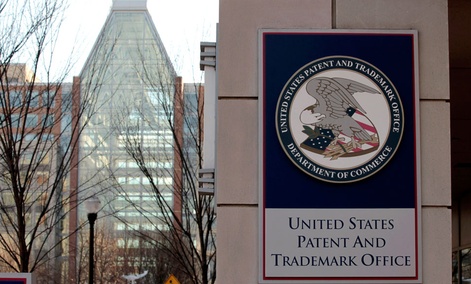
#文章仅代表作者观点,未经作者许可,禁止转载,文章不代表IPRdaily立场#
发布:IPRdaily中文网(IPRdaily.cn)
作者:Bashir Ali律师 及 William Dockrey律师
供稿:Brinks Gilson & Lione律师事务所
原标题:对美国专利商标局主张可预见和采用最宽合理解释标准之界限的要求
本文案件中,法官认为如果专利审查员和委员会因权利要求与现有技术参考文献“类似”而主张可预见(anticipated),但未提供进一步解释或事实证据,则不足以支持该结论。对权利要求采用最宽合理解释标准时应保持与说明书范围的一致。
本月联邦巡回法院对专利审判和上诉委员会(Patent Trial and Appeal Board,“委员会” )的上诉案件进行了裁决,In re Hodges, Appeal No. 2017-1434 (Fed. Cir. 2018).案件中“委员会”维持了专利审查员的认定:因现有技术参考文献中的元素与权利要求限制“类似(similar)”,所以全部权利要求被现有技术所预见(anticipated)和/或显而易见(obvious);联邦巡回法院认为“委员会”对权利要求可被预见没有提供进一步解释,因此不足以支持认定并撤销了“委员会”的判决。
本上诉案涉及两项重要的专利审查法律原则问题:1)为证明权利要求被现有技术所预见,美国专利商标局(USPTO)必须如何展示以证明权利要求的主题本质上被参考文献所披露(inherently disclosed)?与2)USPTO对权利要求采用“最宽合理解释标准(Broadest Reasonable Claim Interpretation Standard)”的界限在哪?
根据联邦巡回法院, USPTO必须提供事实证据支持“预见”裁决。任何对权利要求的要素与被引用参考文献揭露之信息具有相似性的主张,必须通过展示引用参考文献如何本质上披露权利要求主题来支持该主张。关于对权利要求的解释,法院认为尽管USPTO对权利要求可以采用“最宽合理解释标准”,但解释必须与说明书(specification)相一致。
权利要求主题本质上被参考文献披露
Kenneth Hodges的专利申请覆盖改良的排水阀(drain valve)。222号申请权利要求1:定义进口阀座的一个阀体(a valve body that defines an inlet seat)。
在驳回申请人的权利要求时,专利审查员与委员会依据两份现有技术参考文献(Rasmussen 和 Frantz),认为权利要求被预见或将两份现有技术参考文献结合导致权利要求显而易见。对于Rasmussen参考文献,审查员认为图7(FIG 7 请参照附件原文)中的无标记阀门(FIG 7 红色)与本申请中权利要求的配置类似(similar to the positioning),因此参考文献本质揭露了Hodges所主张的阀体。
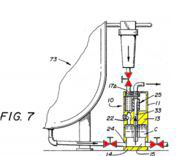
联邦巡回法院推翻(reversed)委员会关于权利要求被预见的裁决,同时撤销(vacated)委员会显而易见的裁决。法院认为委员会既没有使用事实证据支持相似性的主张;也没有进一步解释如何使本领域普通技术人员“在没有过度实验的情况下”,根据Rasumssen参考文献图7中的无标记阀门的配置实施本发明。法院认为对Rasumssen参考文献唯一正确的解释为:无标记阀门内的进口阀座是外部排水阀的外壳。因此,进口阀座不能由阀体来定义,如权利要求1中所要求的。
这部分判决的判决可作为一项提醒:即使现有技术资料可能内在地揭露了权利要求主题的限制,现有技术资料只有在能够使本领域普通技术人员在没有过度实验的情况下实施所主张的发明,才具有对权利要求的“预见”。
最宽合理解释标准
222号申请权利要求1:一个生成信号的传感器(a sensor that generates a signal)。委员会采纳了专利审查员对“信号(signal)”的解释:一种行为、事件、或引起/刺激某些行为的原因。委员会同时支持审查员认为的权利要求被Frantz参考文献所预见。
在驳回委员会对“信号” 一词的解释时,联邦巡回法院指出委员会的解释与说明书不相符。委员会对“信号”的解释不合理,因为说明书并没有提出信号本身可以构成压力表指针的移动,以回应传感压力。因此,委员会对“信号”牵强的解释与申请不符合,从而不符合最宽合理解释标准。
这份判决可作为一项对权利要求采用最宽合理解释标准受说明书限制的例案。
附:英文全文
Requirements to establish anticipation and boundaries of the broadest reasonable interpretation as applied by the USPTO
On Monday February 12, 2018, the Federal Circuit vacated the Patent Trial and Appeal Board (“Board”) decision that affirmed the examiner’s rejection of all claims as being anticipated and/or obvious. Two important legal principles of patent examination are at issue in this case: 1) for purposes of anticipation, what must the PTO show to establish when claimed subject matter is inherently disclosed by a reference? And, 2) what are the boundaries of the broadest reasonable claim interpretation (BRI) standard applied by the USPTO. According to the Federal Circuit, the USPTO must show facts to support a decision of anticipation. Any assertion of similarity between claimed elements and those disclosed in a cited reference must be supported by showing how a cited reference inherently discloses claimed subject matter. With respect to claim interpretation, although the USPTO can give claim terms their broadest reasonable interpretation, that interpretation must be consistent with the specification.
Inherency
The patent application at issue included claims drawn to a drain valve comprising: a valve body, wherein said valve body defines an inlet seat and a first outlet seat downstream of said inlet seat. Accordingly, the claims require that the valve body define the inlet seat.
In rejecting the applicant’s claims, the examiner and the Boarrd relied on two prior art references (Rasmussen and Frantz). The examiner found that Rasmussen inherently disclosed an inlet seat within an unlabeled valve depicted in Rasmussen’s FIG. 7 above inlet port (17A). As shown in the annotated version of Rasmussen’s FIG. 7 below, the unlabeled valve (shown in red above inlet port 17A) resides above the housing 11 that contains the other valve components (shown in yellow):
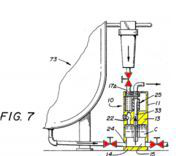
In affirming the anticipation rejection, the Board found that Rasmussen’s unlabeled valve is connected to, and therefore allows or prevents flow into, inlet port 17A, and that the seat of the unlabeled valve would therefore be an internal part of and contained within the outer casing of drain valve 10. As sole support for its findings, the Board asserted that “the positioning of Rasmussen’s unlabeled valve is similar to the positioning of [the subject application’s] second member 16, which extends away from valve body 12, ostensibly to allow second member 16 to be controlled.
The Federal Circuit noted that the Board neither supported its assertion of similarity by showing facts, nor explained how the positioning of the unlabeled valve in Rasmussen’s FIG. 7 would enable a skilled artisan to “practice the invention without undue experimentation.” Even if Rasmussen’s unlabeled valve is ostensibly similar to the ’222 application’s second member 16 in some respects, it is different in the only respect that is relevant to the claims at issue—i.e., it is not an internal part of or contained within the valve body. The court found that FIG. 7 clearly shows that the valve is external to and outside Rasmussen’s casing.
Accordingly, the only permissible factual finding that could be drawn from Rasmussen is that the inlet seat within the unlabeled valve is not “defined” by the “valve body,” as required by the claims. This part of the decision serves as a reminder that although a prior art document may disclose inherently a limitation of a claimed subject matter, the prior art document is anticipatory only if it enables a skilled artisan to “practice the invention without undue experimentation.”
Broadest Reasonable Interpretation
Claim 1 of the ’222 application is also drawn to a drain valve comprising: a sensor downstream of said inlet seat, wherein said sensor generates a signal reflective of a pressure downstream of said inlet seat. The Board adopted the examiner’s construction of “signal” as an act, event, or the like that causes or incites some action and affirmed the examiner’s determination that Frantz anticipates the claims.
In rejecting the Board’s claim interpretation of “signal,” the Federal Circuit noted that the Board’s construction is inconsistent with the specification. The Board’s interpretation of “signal” was unreasonable because the specification does not suggest that the signal itself can constitute movement of the pressure gauge’s needle in response to the sensed pressure. Therefore, the Board’s strained interpretation of “signal” is inconsistent with the application, and, as such, does not meet the broadest reasonable interpretation standard. This decision is an example of a case where the broadest reasonable interpretation of a claim term is limited by the specification.
发布:IPRdaily中文网(IPRdaily.cn)
作者:Bashir Ali律师 及 William Dockrey律师
供稿:Brinks Gilson & Lione律师事务所
编辑:IPRdaily赵珍 校对:IPRdaily纵横君
推荐阅读
“投稿”请投邮箱“iprdaily@163.com”

「关于IPRdaily」
IPRdaily成立于2014年,是全球影响力的知识产权媒体+产业服务平台,致力于连接全球知识产权人,用户汇聚了中国、美国、德国、俄罗斯、以色列、澳大利亚、新加坡、日本、韩国等15个国家和地区的高科技公司、成长型科技企业IP高管、研发人员、法务、政府机构、律所、事务所、科研院校等全球近50多万产业用户(国内25万+海外30万);同时拥有近百万条高质量的技术资源+专利资源,通过媒体构建全球知识产权资产信息第一入口。2016年获启赋资本领投和天使汇跟投的Pre-A轮融资。
(英文官网:iprdaily.com 中文官网:iprdaily.cn)

本文来自IPRdaily.cn 中文网并经IPRdaily.cn中文网编辑。转载此文章须经权利人同意,并附上出处与作者信息。文章不代表IPRdaily.cn立场,如若转载,请注明出处:“http://www.iprdaily.cn/”

 共发表文章4693篇
共发表文章4693篇文章不错,犒劳下辛苦的作者吧
- 我也说两句
- 还可以输入140个字

